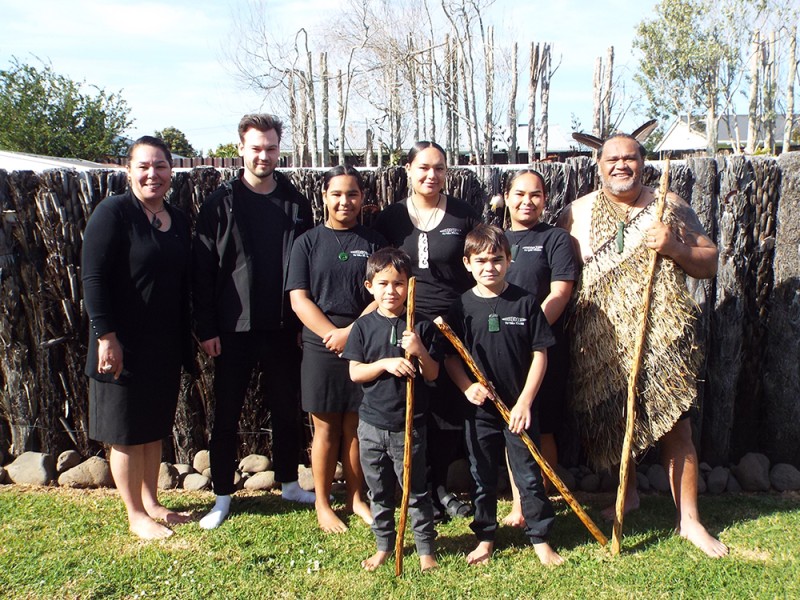
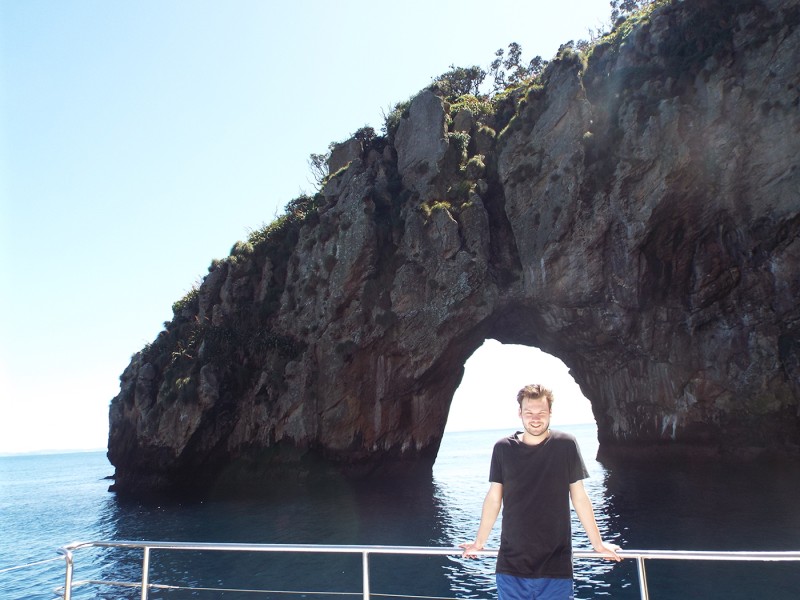
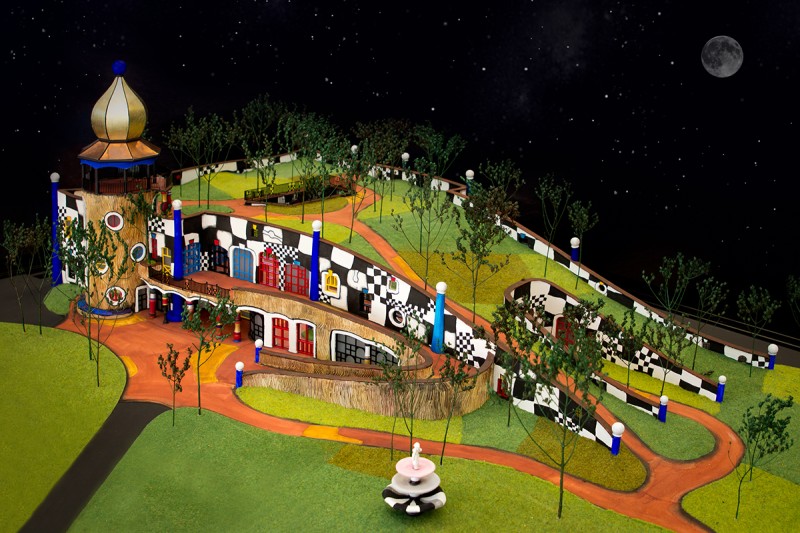
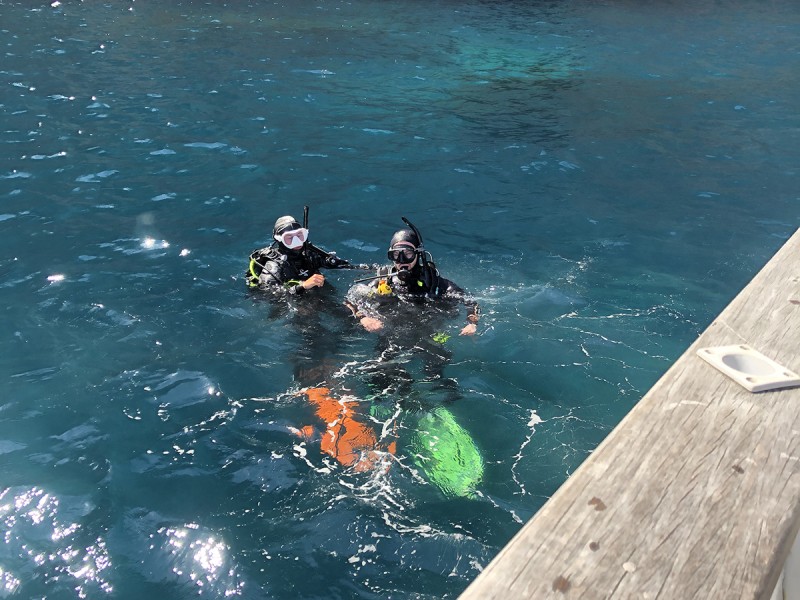
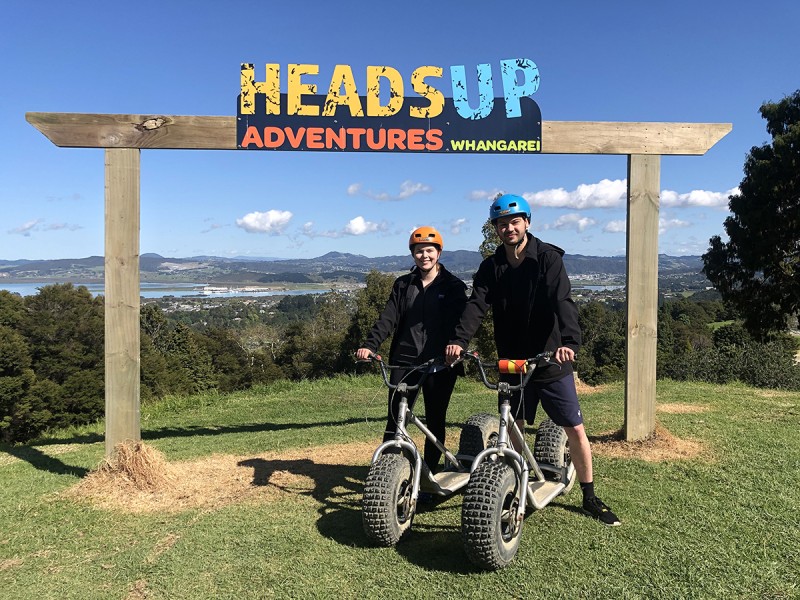
A hāngi, a scooter, and an oxygen tank by Sam Hollis
Northland (Summer 2020)
Tourism in Aotearoa has changed. Attractions that once thrived on international interest must now adapt to an all-Kiwi crowd. After spending four days in Whangārei, splitting time as cultural observers and thrill-seekers, my partner Alex and I realised that not only is there an abundance of fun to be found up north, there’s also plenty to learn.
It’s safe to say I was the perfect test subject. Born and raised in the South Island, I had never ventured this far north; I felt like a stranger in my own country as soon as we escaped the concrete of Auckland and set upon the two-and-a-half-hour drive up to Whangārei on Thursday night. We arrived at the beautiful Distinction Whangarei Hotel, over the moon to collapse in our cosy bed to prepare for the adventures that awaited the following day.
When the sun rose on Friday morning, we could finally get a complete grasp of our surroundings. I have to say – Whangārei knows how to put on a show. The bright lights of morning danced off the still Hātea River, which we could almost touch from our balcony. On the other side we spotted the bustling Town Basin, eyeing up restaurants and cafés for later. For a more thorough introduction, we met with Rangimarie Harding of Tu Tika Tours, her joyous greeting setting a tone that would carry through the rest of our time away.
As we drove to her family home for a day of interactive Māori experiences, Rangimarie told us about her life, how she learned to embrace her heritage as an adult. She described herself as one of a “lost generation” of Māori who were not encouraged to express their culture during their youth. Today, she, her husband Merv, and their children take great pride in living and sharing their heritage with others. When we reached the gates, a rush of adrenaline surged through me as it sunk in that I was the only man in our group, meaning I must collect the koha during our pōwhiri. My nerves subsided once I accepted Merv’s challenge, and we were welcomed into their home with open arms. A brilliant storyteller and a lover of laughter, Merv told us about the history of his people and his land. We learned about the arrival of Kupe, the legends of Maui, the arrival of Europeans, and the tribal wars. Next, it was time for class – Korari 101 – where Merv shared the many uses of our native flax and taught us to weave a flower. Following a morning tea of delicious Takakau bread with homemade spreads, we each filled a container with kūmara, cabbage, and meat for a hāngi, which we would enjoy following a tour around the scenic sites of Whangārei. The highlight here was undoubtedly the picturesque Otuihau Whangārei Falls, where water rushes over a 26-metre cliff face before a tall forest. Merv touched us all by describing his connection to the land, which came with a simple, heartfelt message: “we must respect manga”.
We drove to Kiwi North, a museum and heritage park home to the only kiwi house in Northland. There, director of operations Allie Fry introduced us to Raukura and Zeffer, two North Island brown kiwis. We spied tuatara, native geckos, and more fascinating creatures before heading into the museum. While reading about the history of a large, 200-year-old waka and looking over the skeleton of a bush moa, I heard Merv serenade us with a kōauau, a small Māori flute. Finally, we returned to scoff down the food we prepared earlier – I think the fact that mine disappeared in five minutes flat says everything you need to know about the quality.
Whangārei’s cultural offerings continued to roll in thick and fast that afternoon when we paid a visit to the Hundertwasser Art Centre, currently under construction in the town centre for a December 2021 opening. It was based on a design by Friedensreich Hundertwasser himself, a revered Austrian-born visual artist and architect who lived in Northland. The $30 million building will include a collection of Hundertwasser’s art, the Wairau Māori Art Gallery, the largest rooftop garden in the Southern Hemisphere, plus an auditorium, shop, and restaurant. Communications manager Greg Hay showed us around the site, which already showed hints of Hundertwasser’s off-kilter aesthetic: colourful, asymmetrical tiling, natural features, and irregular shapes and forms. It’s clear we were seeing the beginnings of a future cultural landmark, one that I can’t wait to return to.
Following a jam-packed introductory day in Whangārei, Alex and I were glad to rest our legs at The Quay with a pizza and a burger.
Day two began with an early rise and drive to Tutukaka, roughly 40 minutes away on the east coast of Northland. We were there to travel with Dive! Tutukaka to the Poor Knights Islands, a pristine marine reserve that offers some of the best ocean swimming, snorkelling, and scuba diving opportunities in the world. Once fitted out with our wetsuits, we jumped on board and headed on our way. The islands have attained the highest level of protection possible from the Department of Conservation, and frankly, I don’t know if I have ever seen a marine environment so pure. The blue water sparkled, its crystal-clear surface a window to the ocean life below; a mysterious world of colourful fish and swaying kelp forests. Our skipper told us about the history of those who had inhabited the islands, although today, about 80 percent of them are covered by pōhutukawa trees and humans are forbidden from setting foot on the land. Fun fact: Buller’s shearwaters migrate here from the North American coast to breed annually – the only place on the globe where they do so… eat your heart out David Attenborough! My diving instructor Hope Whittington said that although she’s been working around the islands for a year, they still remind her of Jurassic Park each time she lays eyes on them. I couldn’t have said it better myself.
Our group could barely wait for the anchor to drop before jumping into the water. For me, it was time to dive. Hope put me at ease with an equipment and safety briefing on the boat, assuring me that she’d be there all the way. Strapping on my flippers, my mask, and my oxygen tank, it hit me that I was about to go to the bottom of the ocean and stay there for a long time... I stepped into the water, and after a quick practise session, down we went. I spent the first five minutes or so adjusting to life as a fish. The second I climatised my ears and caught my bearings however, I started to embrace one of the most otherworldly experiences of my life. I swam right through schools of subtropical fish and arches formed by the coral, ultimately spending 35 minutes underwater at a depth of 11 metres. I did it, and I’ve got a certificate to prove it! We spent the rest of the day paddle boarding, snorkelling, and sunbathing on the perimeter of the islands. To top it off, on the journey back we spotted two Bryde’s whales and chased them to catch a rare up-close glimpse.
Back on land we ended the day with a selection of tacos from Red Mexicasa. I have to mention our waiter Gabe, who after only three days on the job, managed to talk Alex into a tequila tasting; downing them was almost as fun for her as watching her reaction was for me.
First up on Sunday, one final adrenaline-fuelled escapade: HeadsUp Adventures atop Whangārei Heads on the northern side of the harbour. There we were given helmets and dropped off at the peak, armed with a monster dirt scooter to find our way down. My assumption that we were in for a leisurely ride was quickly turned on its head (no pun intended) when I gripped the handlebars for dear life, boosting down the bumpy track and drifting around dirt corners. By our third run we had gone from weary tourists to full-blown thrill-seekers looking for jumps and steep runs wherever we could find them. We filled the afternoon by exploring the town on foot, including walking the Hatea Loop and checking out the stunning sculptures that line it.
We woke up in a grump on Monday morning knowing it was time to head home. Thankfully, we had lined up a tour of The Kauri Museum on our way through Matakohe. I must admit, I wasn’t quite sure if this would be my thing – I mean it’s just wood, right? Wrong. The museum’s marketing coordinator Luciana Orr and local expert Pete Panhuis, who has been with the museum for 20 years, showed us around, teaching us all about the history of kauri logging in New Zealand. Kauri timber and gum were once our two biggest exports, and biggest is an apt description, as some kauri logs could weigh up to 100 tonnes. It was extremely desirable, as the tree’s ability to self-prune meant it had no knots and a completely clean finish. The gum was essentially an early plastic that was collected during the gum rush, at its peak between 1880 and 1900. It was used to create varnish, paint, lacquer, and more. We were both awestruck at the sheer size of the museum and its collection, not to mention the passion that radiated from Luciana and Pete.
Four days was simply not enough to squeeze in all that Whangārei has to offer. Each time we swivelled our heads we were bookmarking some attraction or experience for later, and I can’t wait to return to tick a few of those off. Still, our trip was filled with action, culture, teachings, and sunshine, all found in little ol’ Whangārei. Who knew?
View more articles:
« Back to 'Travel Experiences'
